
Dear Reader (2024-04-11),
As the previous post (Five Stans 27) was “On the Road”, a fitting companion is “Along the Road”. There are five Roadside Attractions subsets of in today’s post. If you are reading this on Facebook, this post is in five parts. If you are reading this at SeanDrysdale.com, I am trying a new layout idea. The gallery is constructed differently. Within the gallery the image name is now displayed, and that name now relates to the associated text. If you have any comments on the new layout please let me know.
An Old Oasis – Roadside Attraction 01
80% of Turkmenistan country is covered by the Karakum Desert. We cross the desert twice. Our first crossing is from the Uzbekistan border to Mary and then to Ashgabat. In the second crossing we travel back to Uzbekistan on a completely different route. For many man-made reasons, Turkmenistan is drier than it was during the time of the Silk Road. At that time, there were fortified villages where travelers could rest themselves and their camels, spaced every 30 / 35 km, which corresponded to the distance a caravan could travel in day. Depending on the road, we travel anywhere from 50 to 100 km / hour. As we will see later in this Turkmen sequence of posts, there are sections of road where even 50 km / hr is impossible.
Mary at Night – Roadside Attraction 02
On our first night in Turkmenistan, I am apprehensive about walking around with my mirrorless Canon. Instead, I only carry and use my camera phone. A travel friend and I walk by a bride groom, are struck by sparkly buildings, chat with a trio of young women, and walk by a flagpole with its associated sentry box. These photos fail any number of “good photograph” tests. I like them as they are evocative of a particular place and time.
“Mary, formerly named Merv, Meru and Alexandria Margiana, is a city on an oasis in the Karakum Desert in Turkmenistan, located on the Murgab River. It is the capital city of Mary Region. The ruins of the ancient city of Merv are located near the present-day city. [1]
A Hotel Interior – Roadside Attraction 03
All hotels in Turkmenistan are owned by the state. They look grand. Inside, they feel cavernous and slightly forlorn. In the Western world an aspect of luxury is found in the polish and finish of details. Here, in the Stans and especially in Turkmenistan, luxury is in the grand gesture, and the toilet roll may be attached to the wall with a piece of fence wire.
The Ancient City of Merv – Roadside Attraction 04
The tour guide assures me that the bus will eventually reach the mausoleum and will meet me there. I leave my tour group to run across the desert in my sandals to capture camels walking in front of an ancient mausoleum. I find out later there was much laughter at my expense, and I believe someone called out Run Forest Run. Before my tour group arrives, a group of Turkmen pilgrims / tourists are very happy that I am Canadian. Numerous camera phones and smiles appear.
“During the 12th and 13th centuries, Merv may have been the world’s largest city, with a population of up to 500,000. During this period, Merv was known as “Marw al-Shāhijān” (Merv the Great), and frequently referred to as the “capital of the eastern Islamic world”. According to geographer Yaqut al-Hamawi, the city and its structures were visible from a day’s journey away. In 1221, the city opened its gates to an invading Mongol horde, resulting in massive devastation. Historical accounts contend that the entire population (including refugees) were killed; Tolui Khan is reputed to have slaughtered 700,000 people. Though partly rebuilt after the Mongol destruction, the city never regained its former prosperity. Between 1788 and 1789, the city was razed by Shah Murad of the Emirate of Bukhara for the last time, and its population deported. By the 1800s, under pressure from the Russians, the area surrounding Merv was completely deserted. [2]
Flavour – Roadside Attraction 05
I could have just as easily called this subset Miscellaneous but Flavour imparts just a little more character.
~ 110 – Across the street from a hotel where we had a rest stop, there was another event centre.
~ 115 – Down a lane, we buy the Turkmen equivalents of empanadas for a lunch on the go.
~ 120 – Entrance to a market, where I was asked not to take photographs because I was being too obvious.
Footnotes
[1] – Quoted from https://en.wikipedia.org/wiki/Mary,_Turkmenistan
[2] – Quoted from https://en.wikipedia.org/wiki/Merv
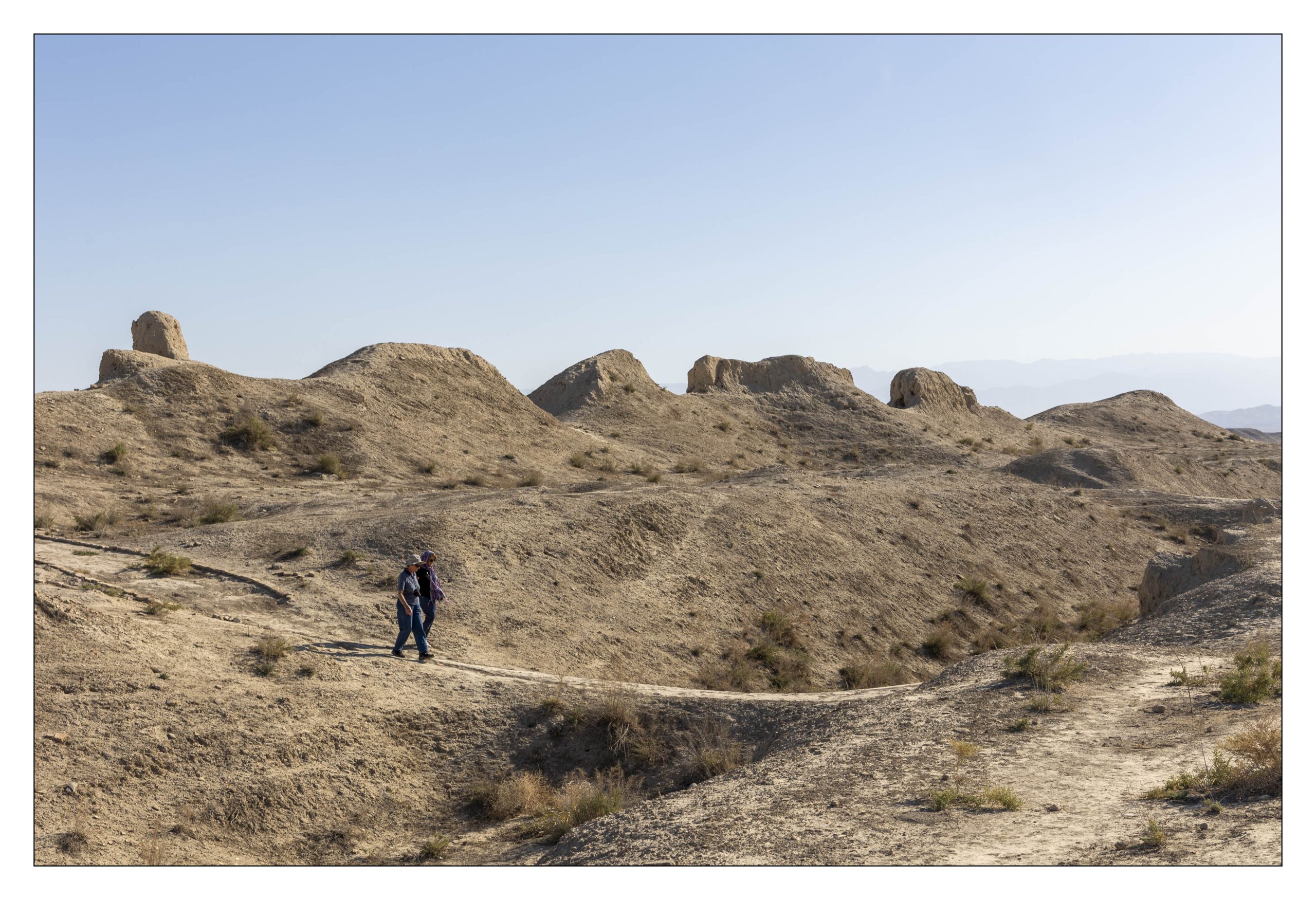
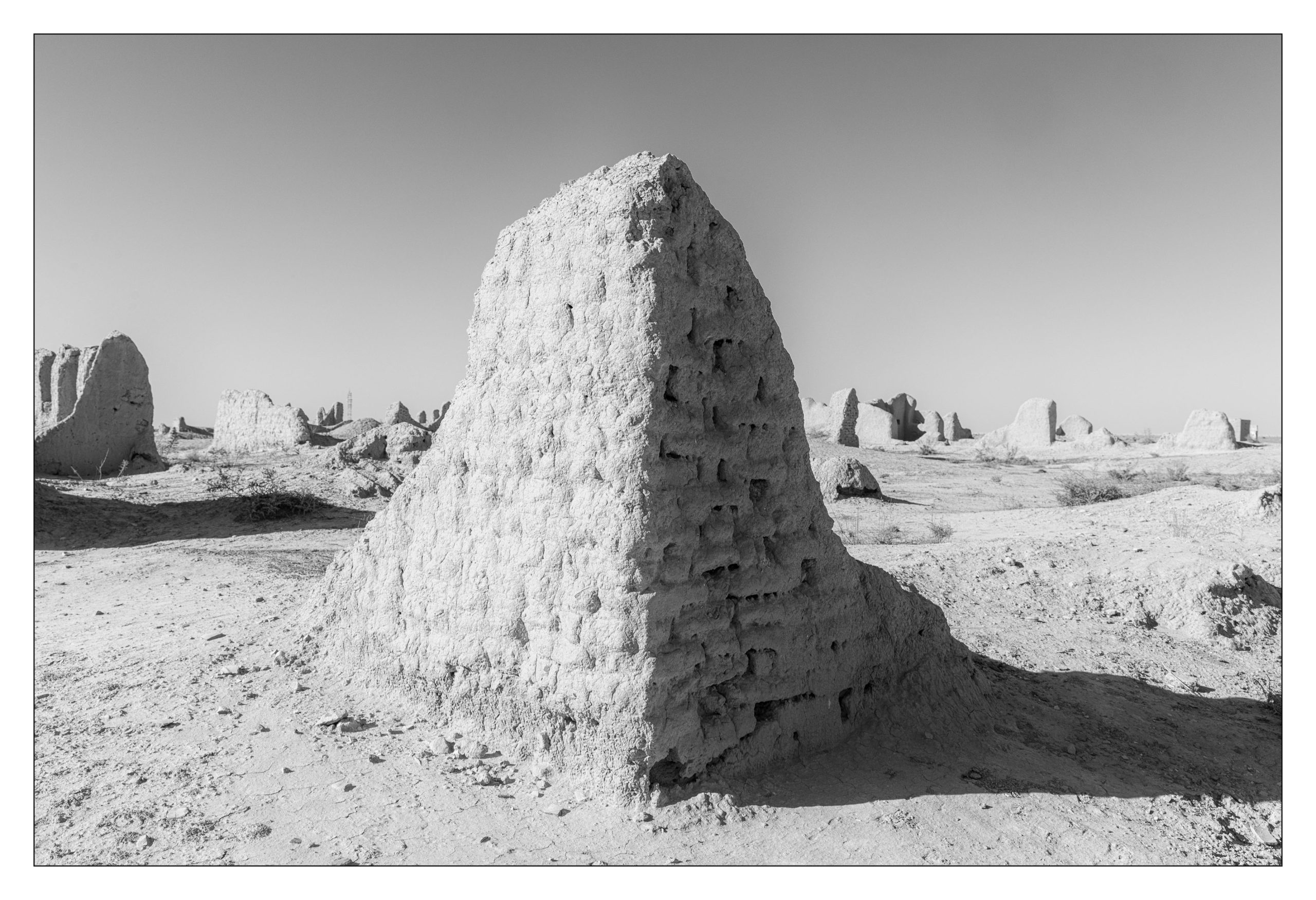

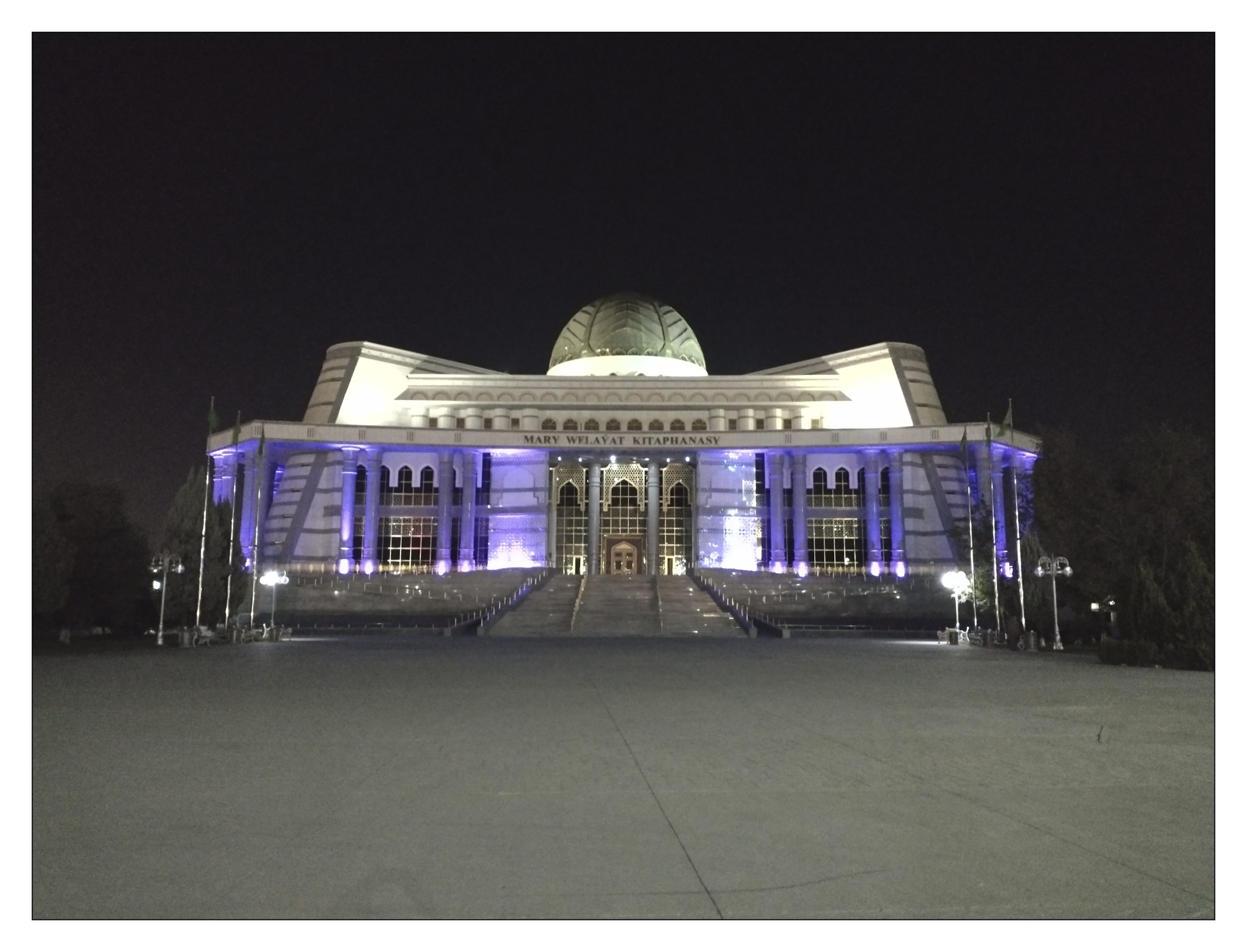
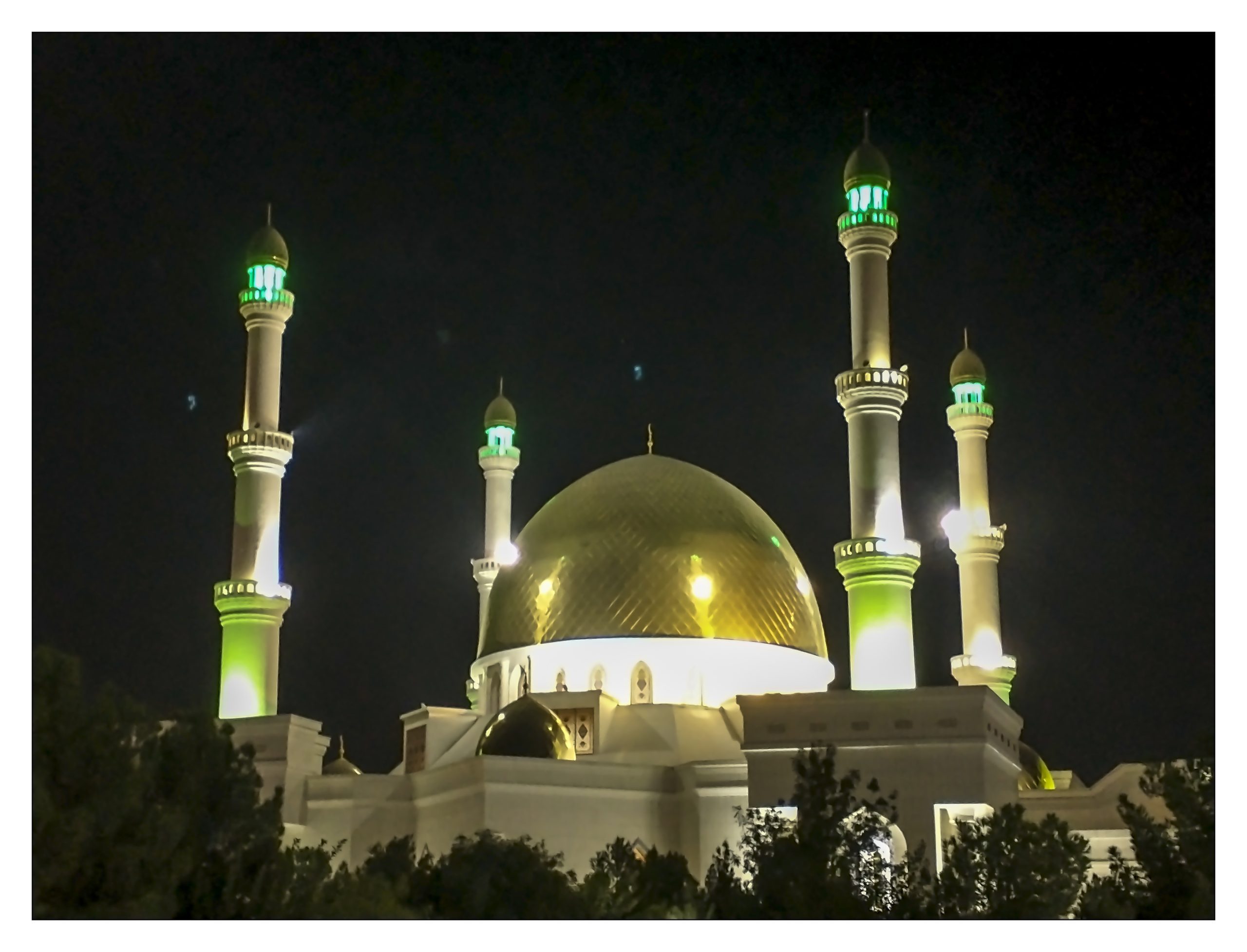
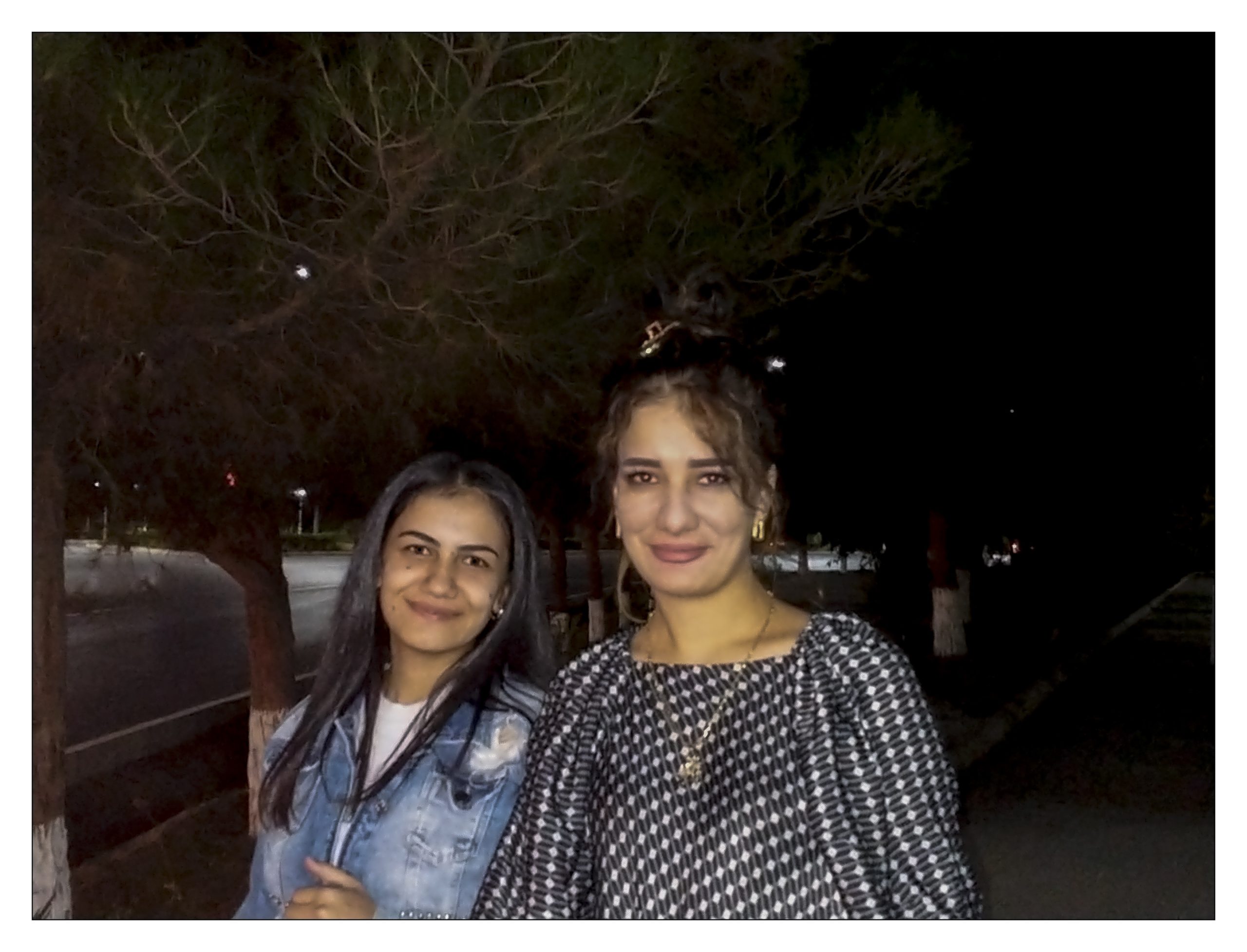
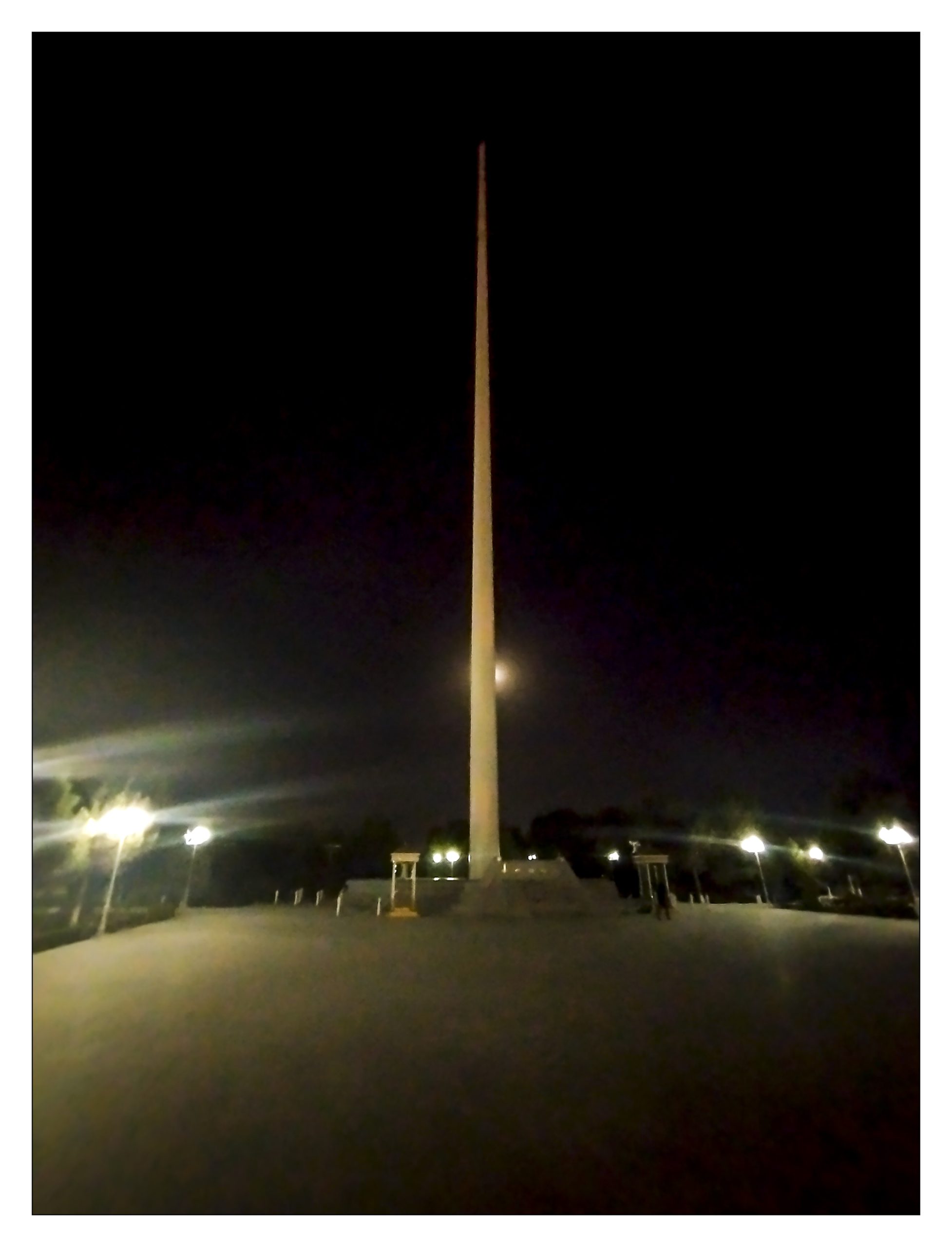
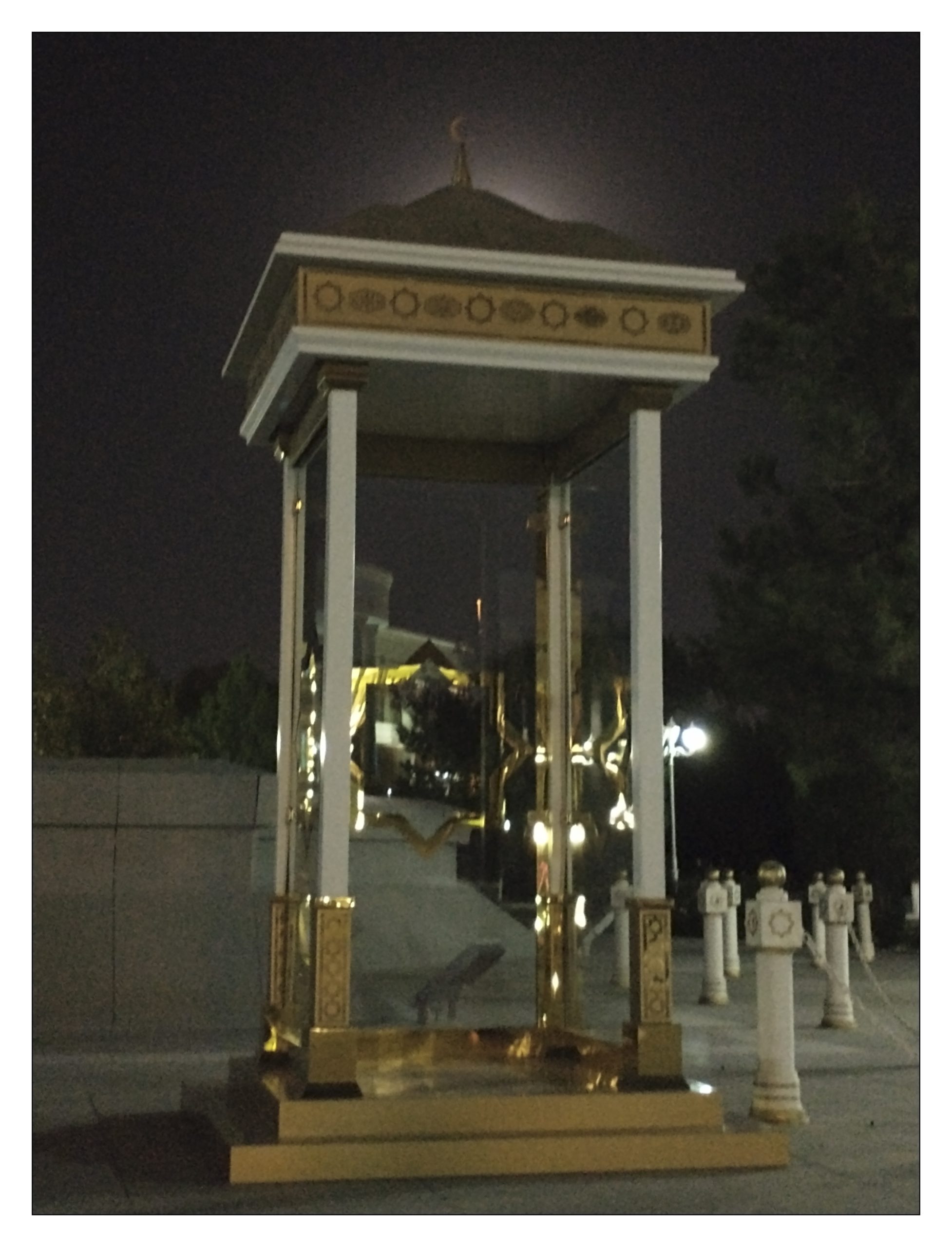
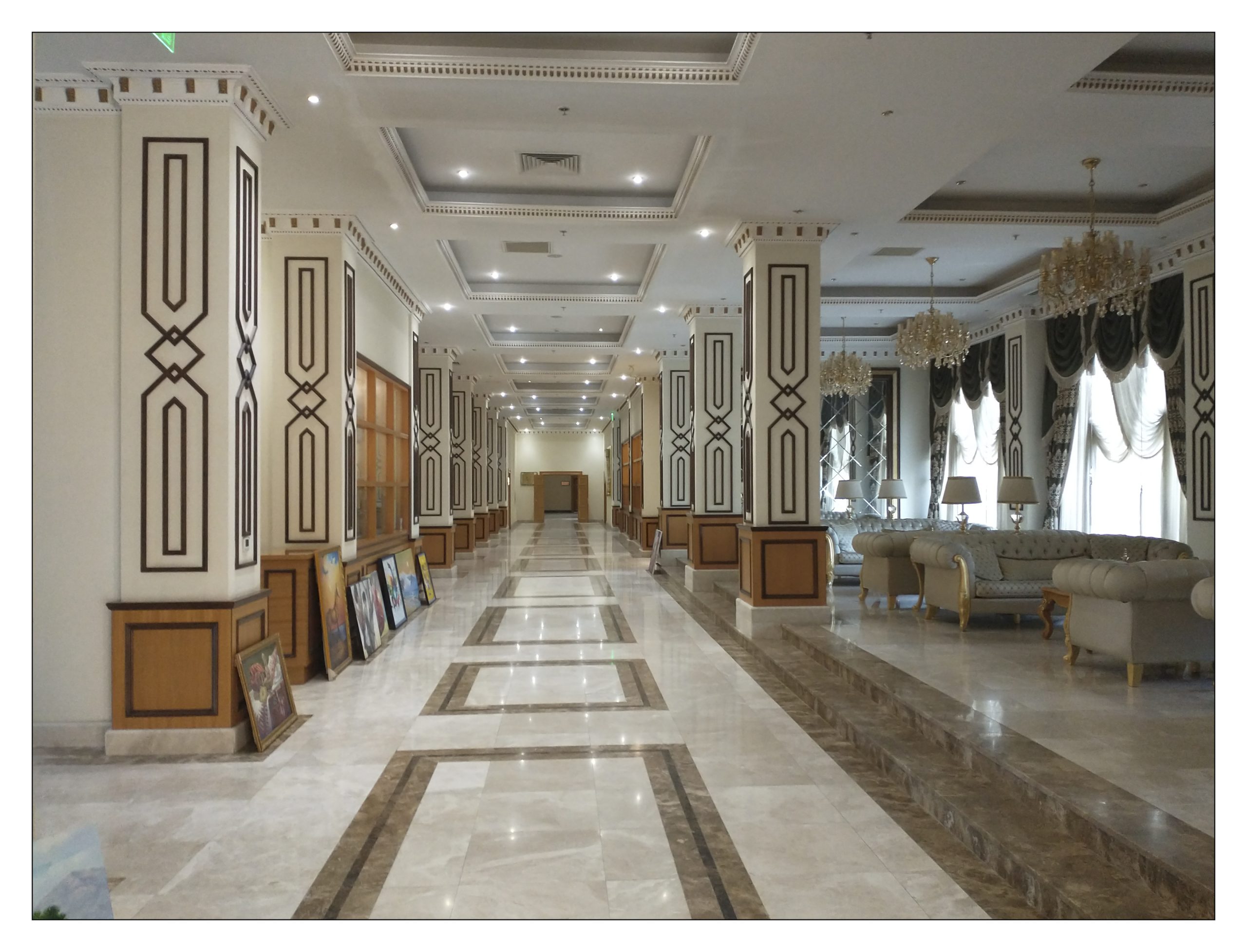
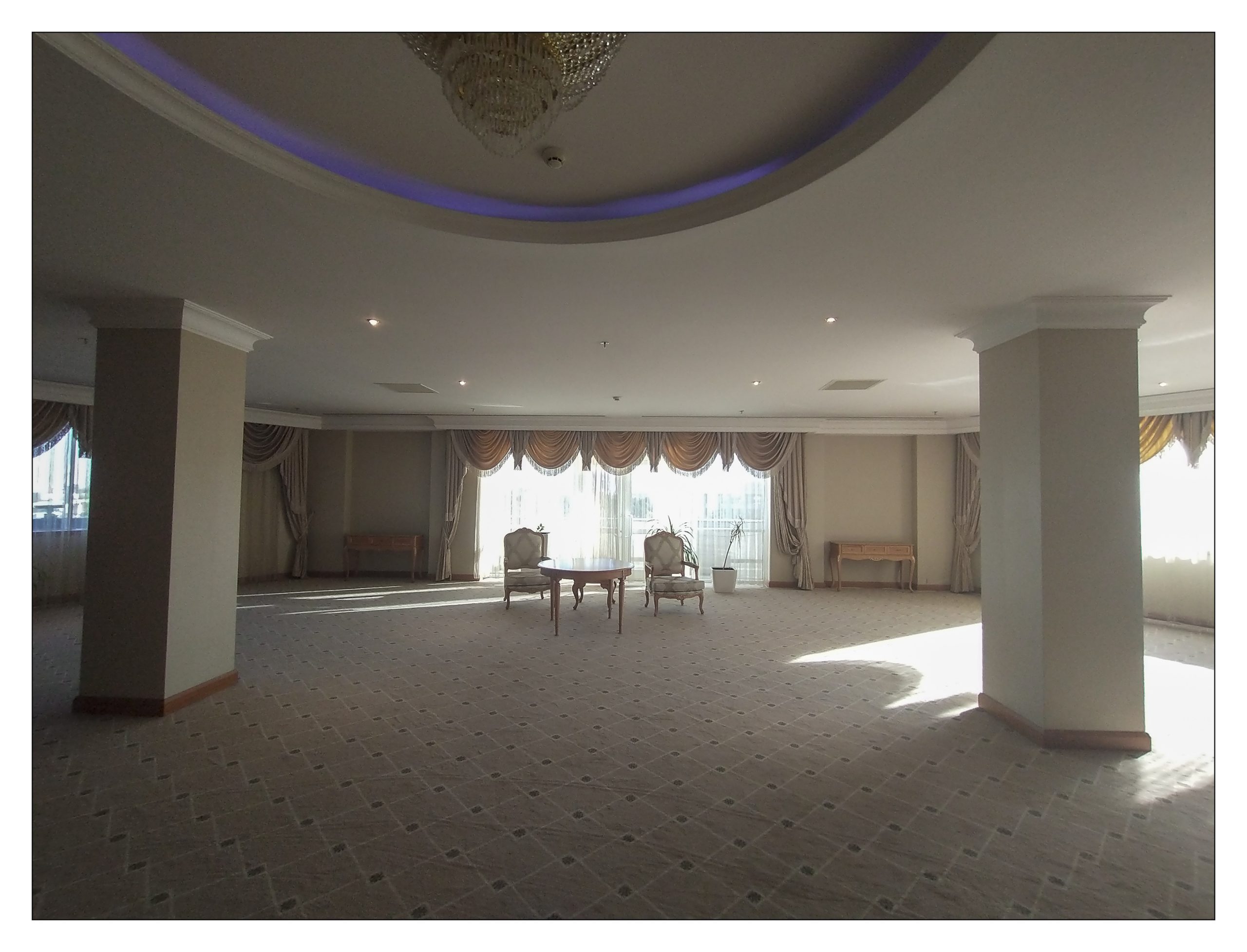
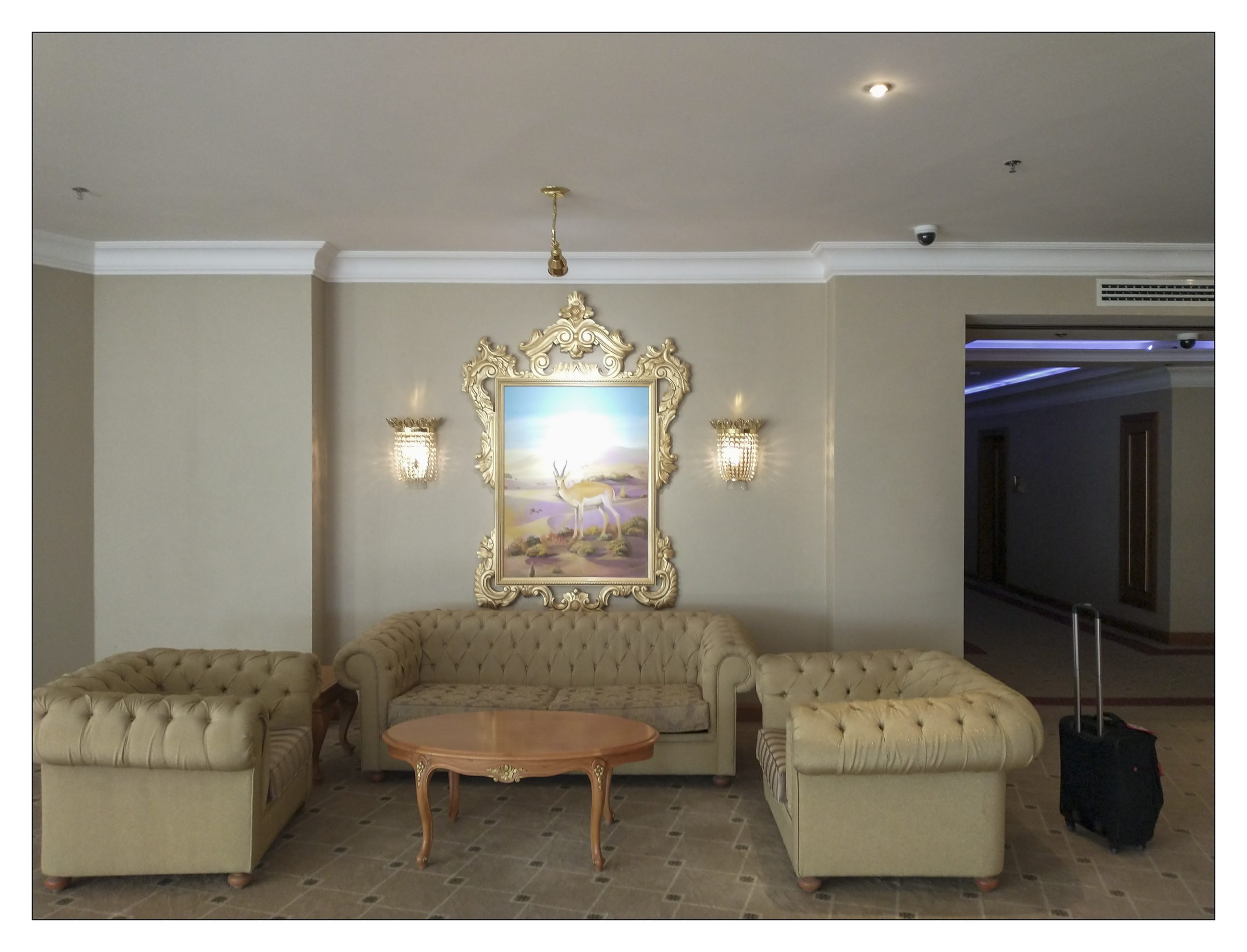
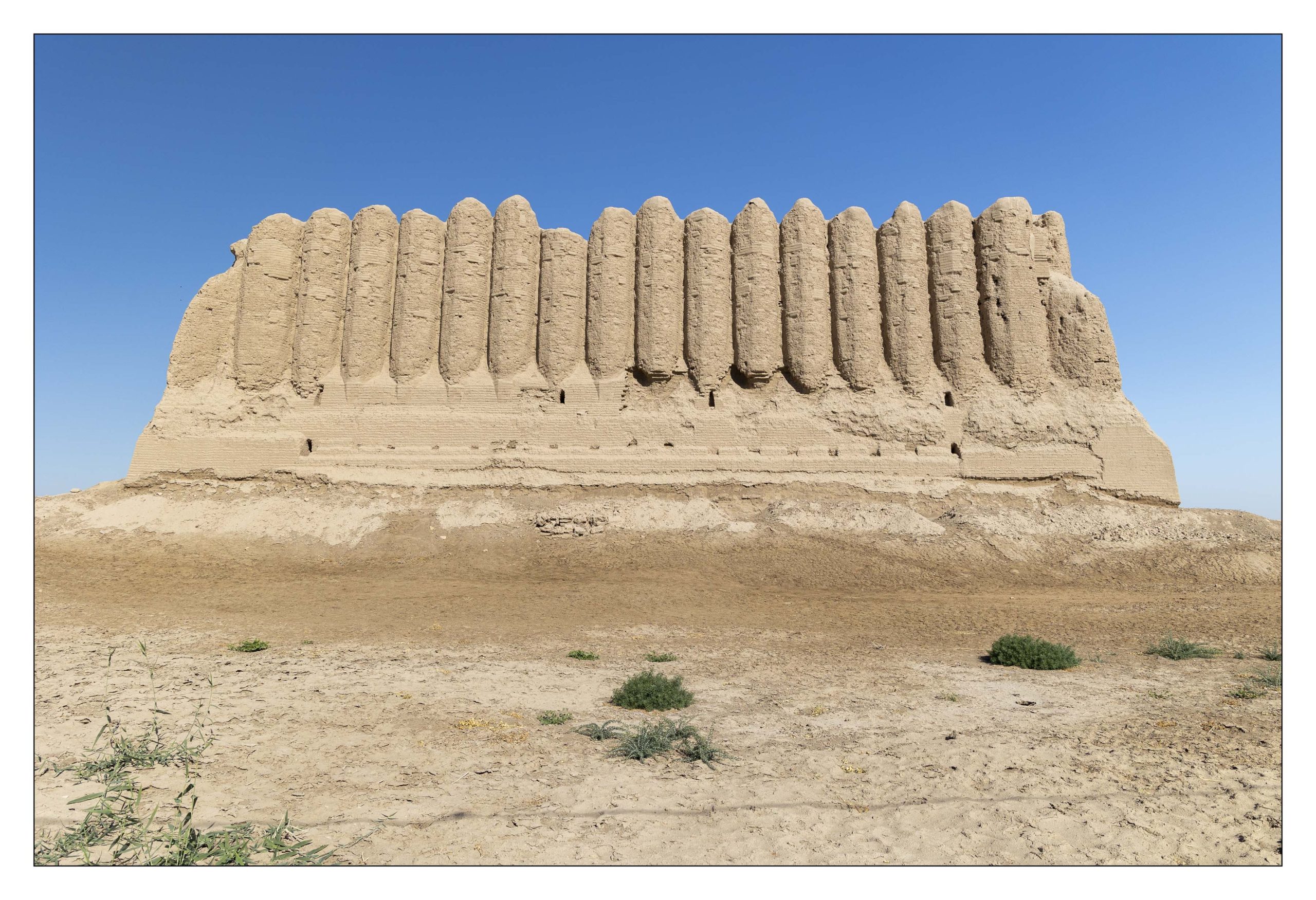
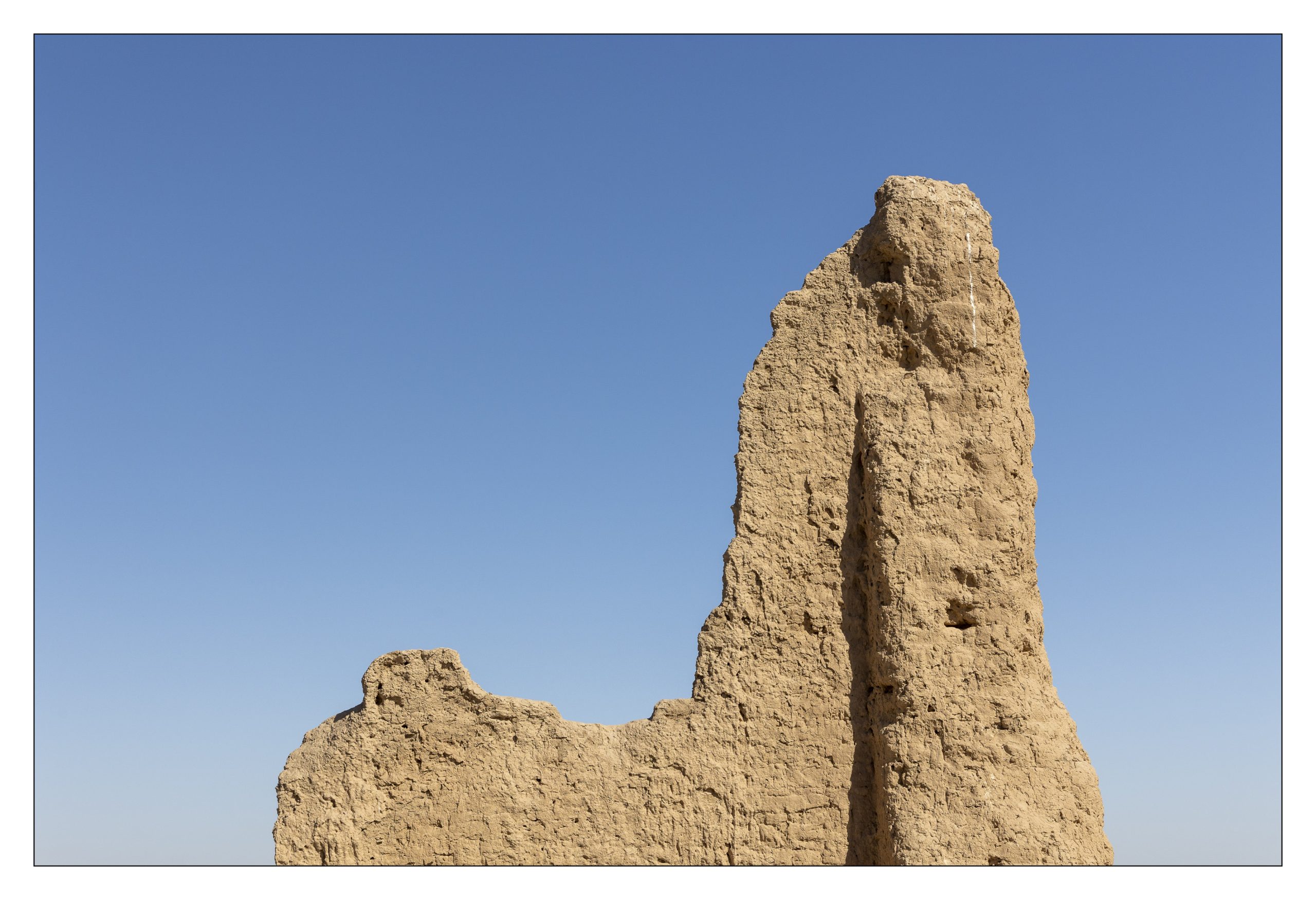
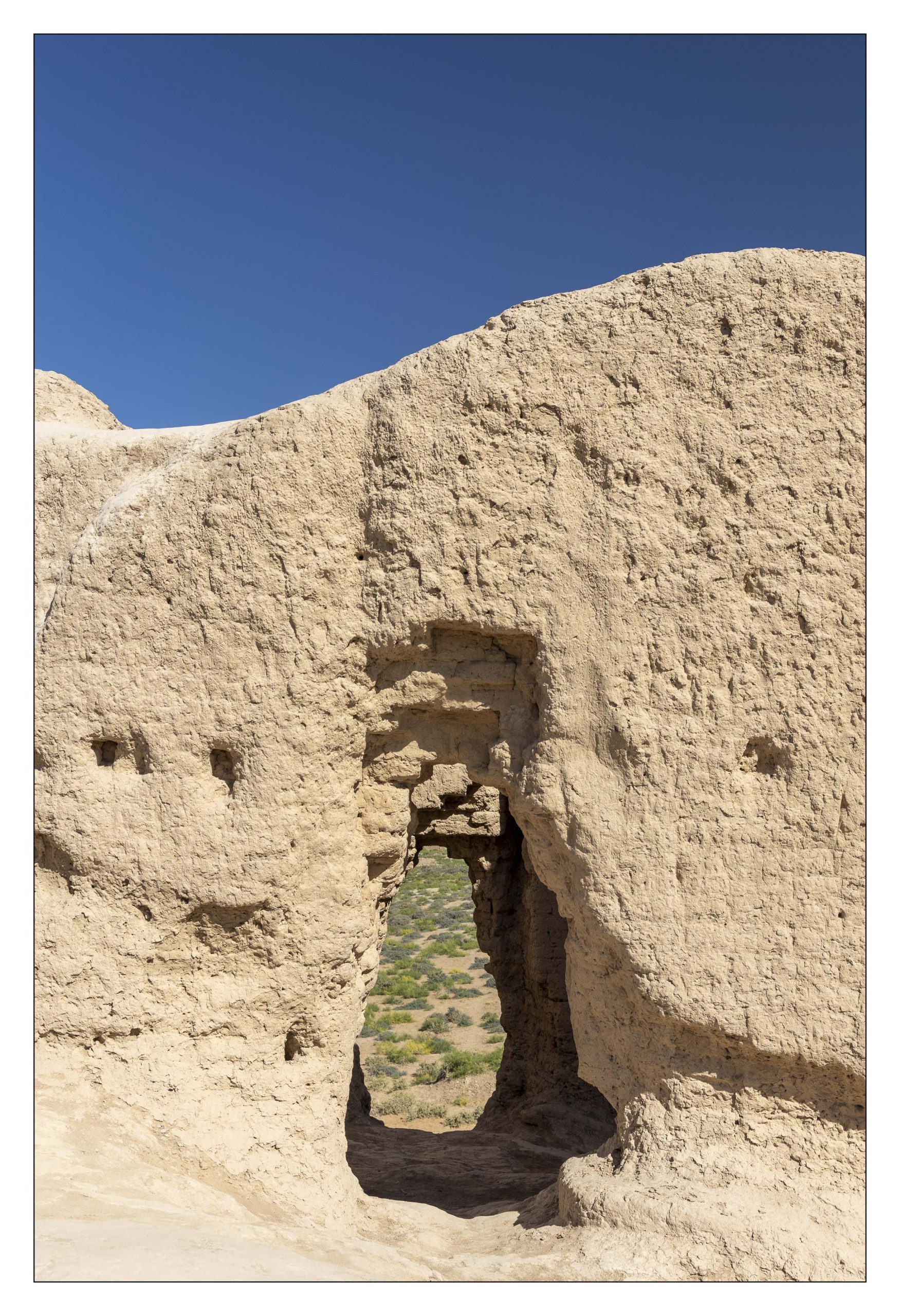
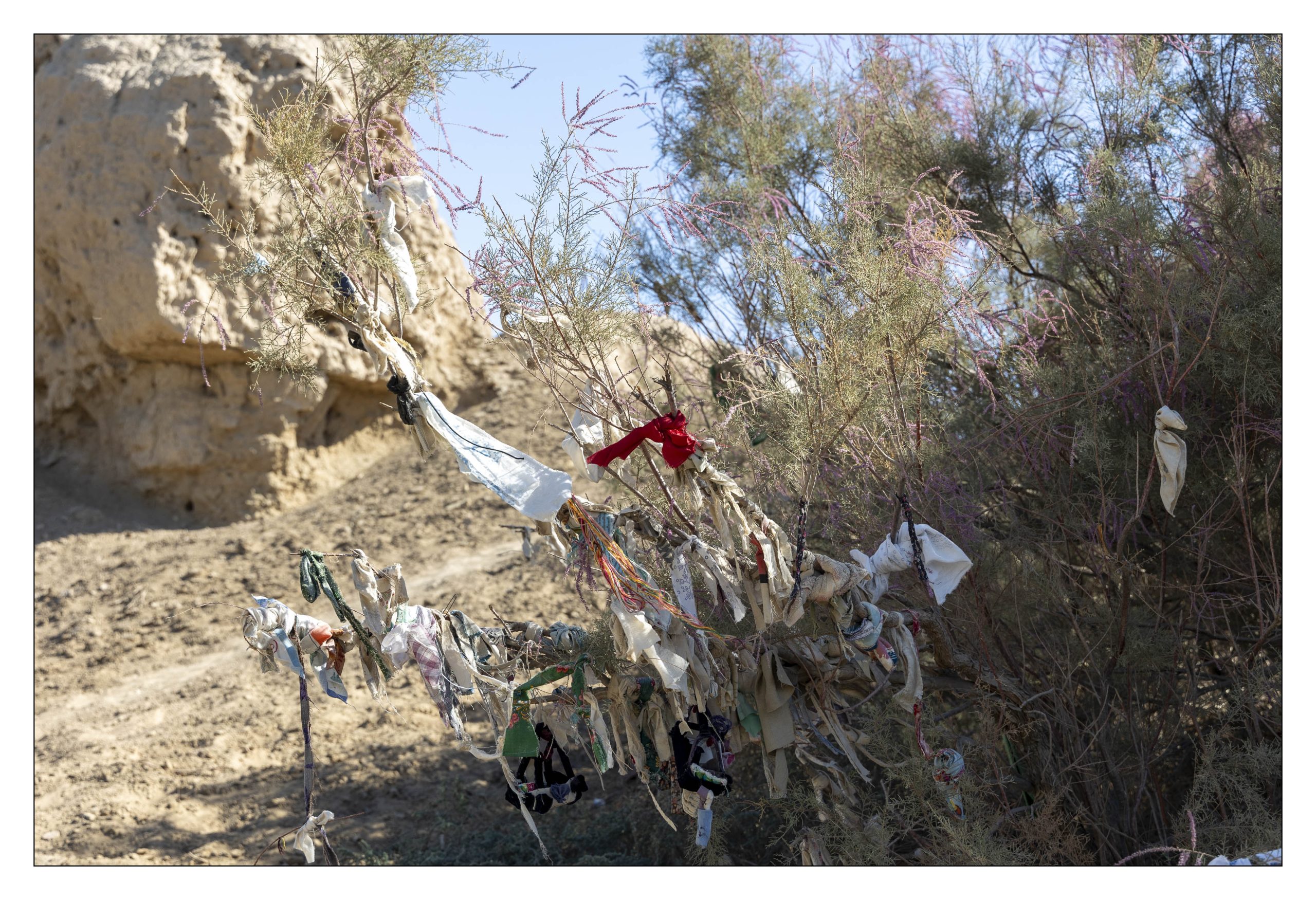
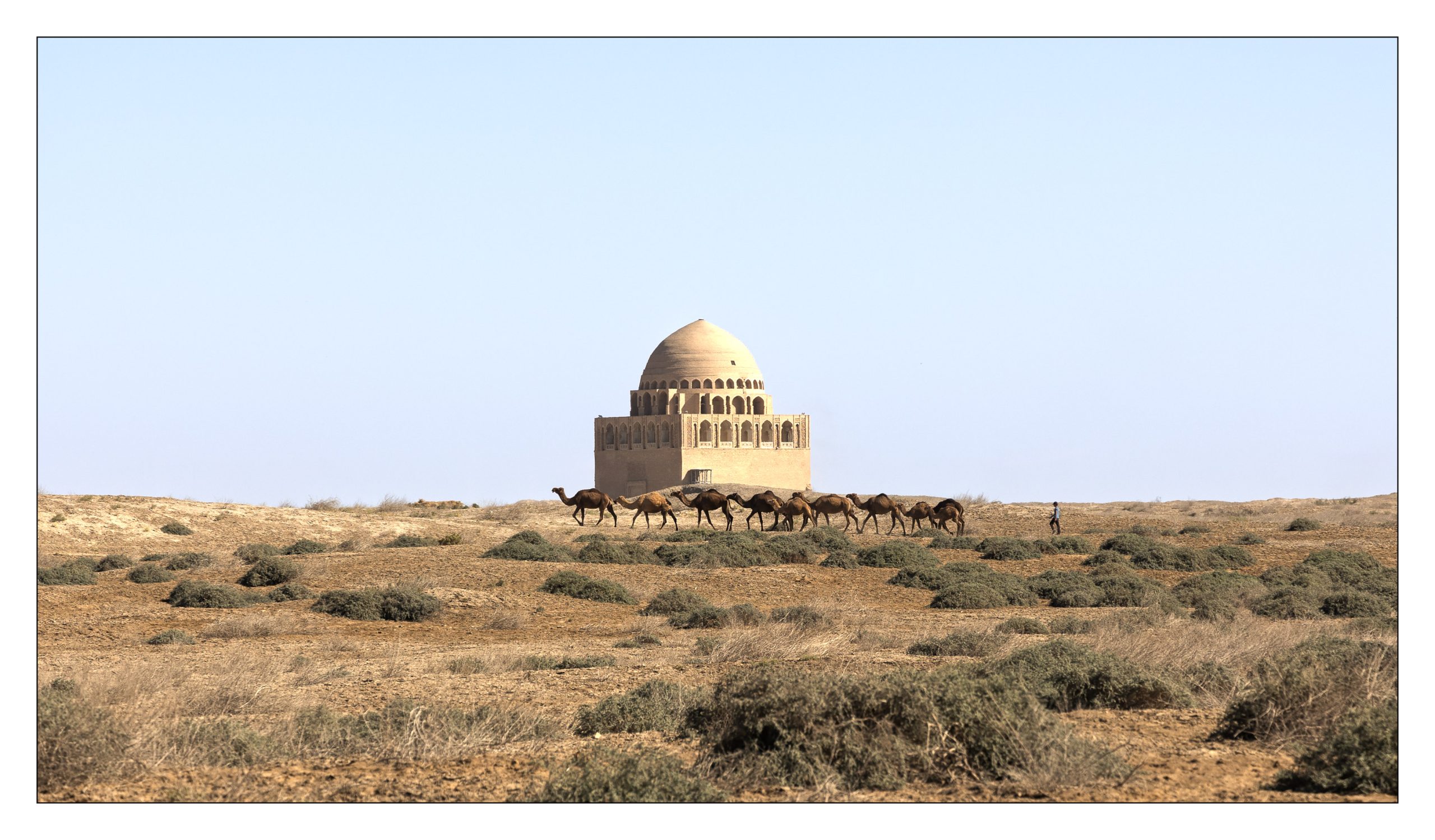
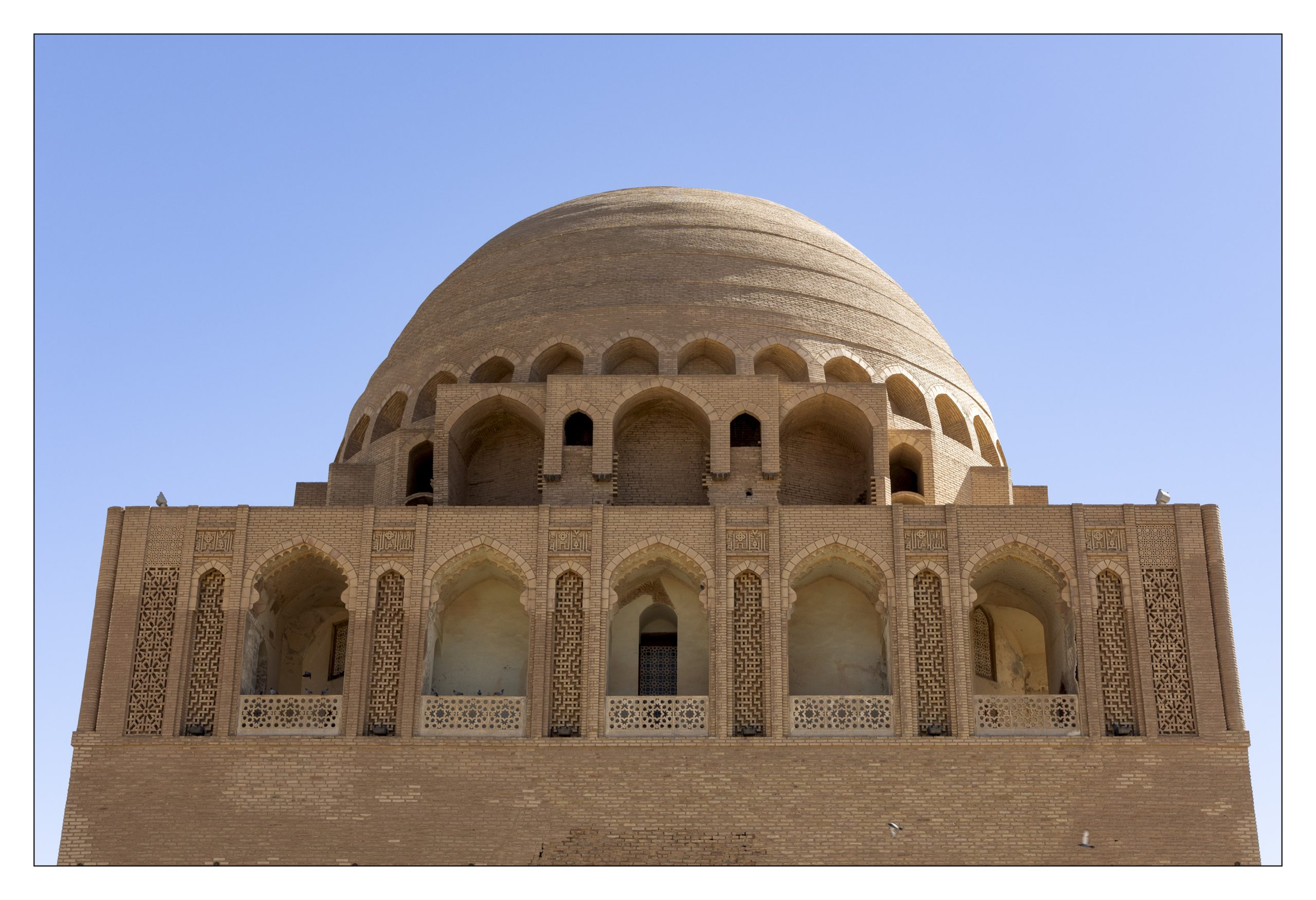
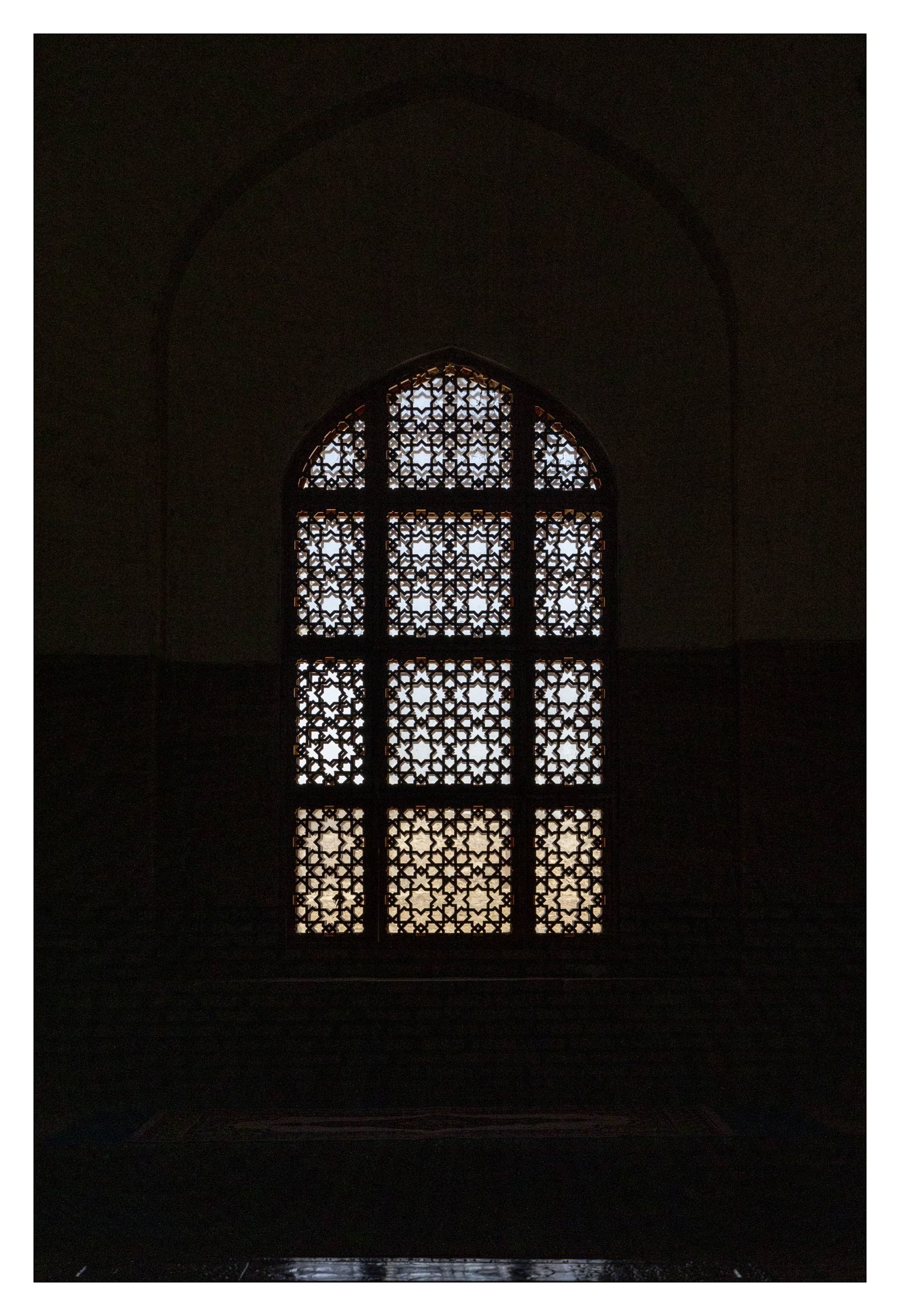
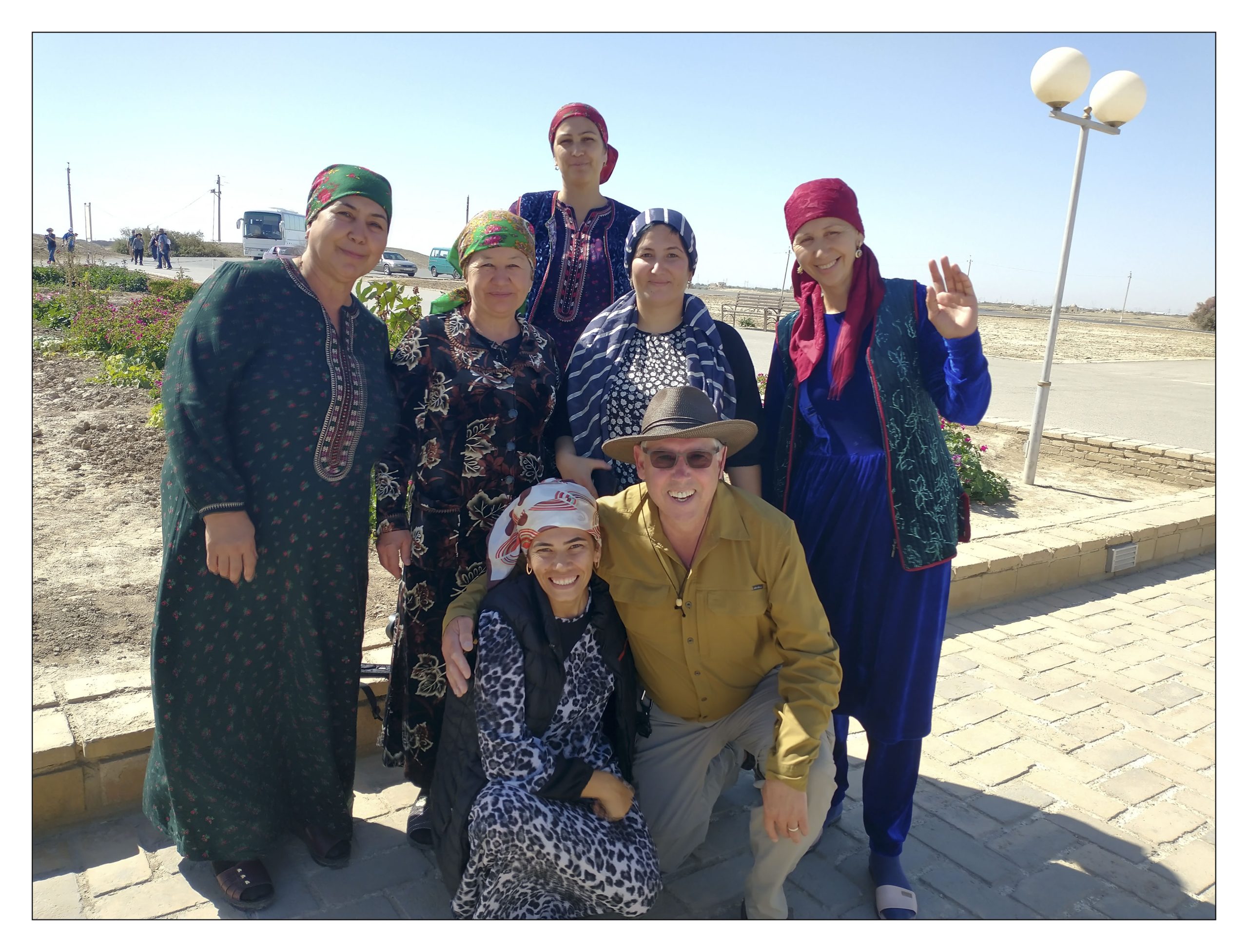
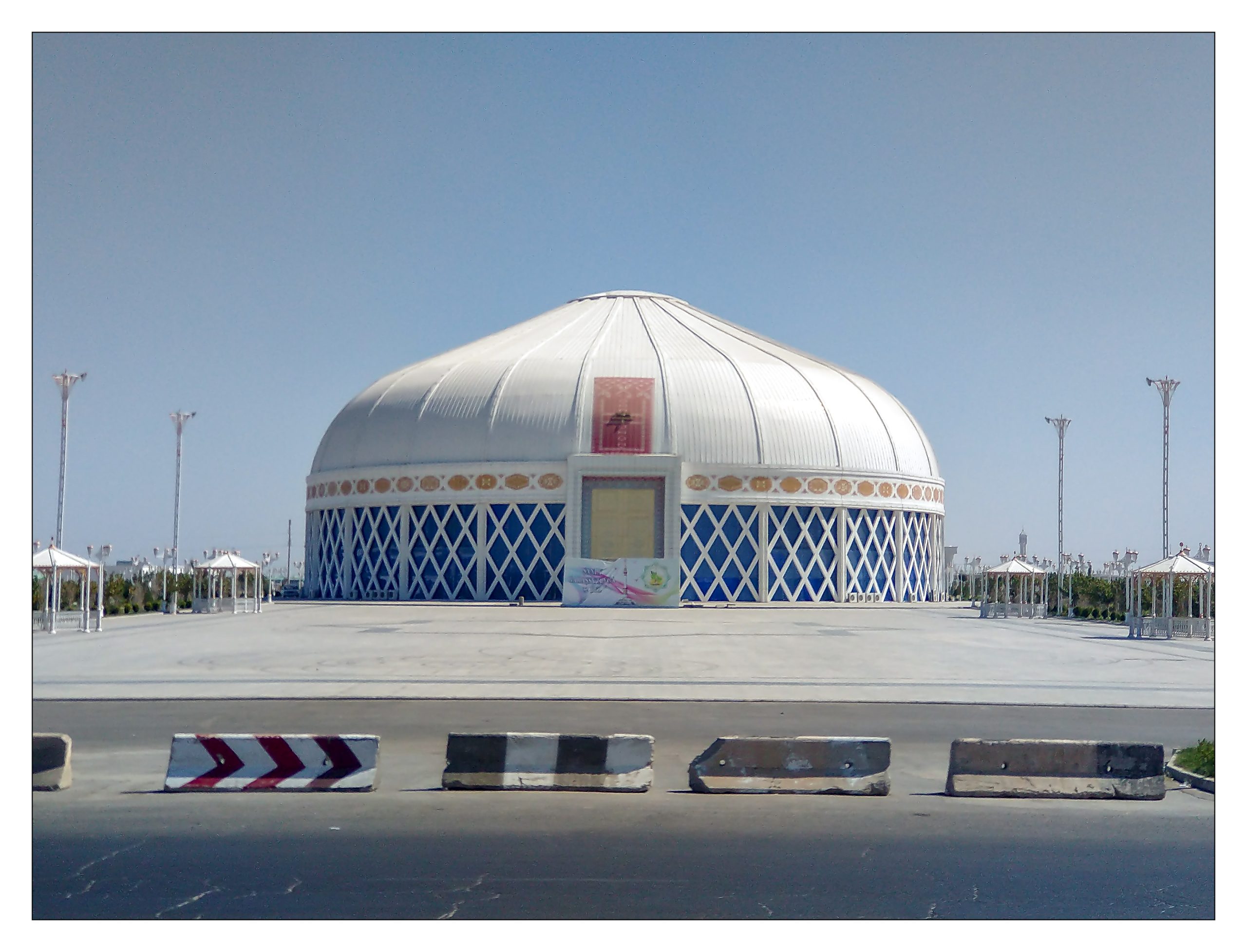
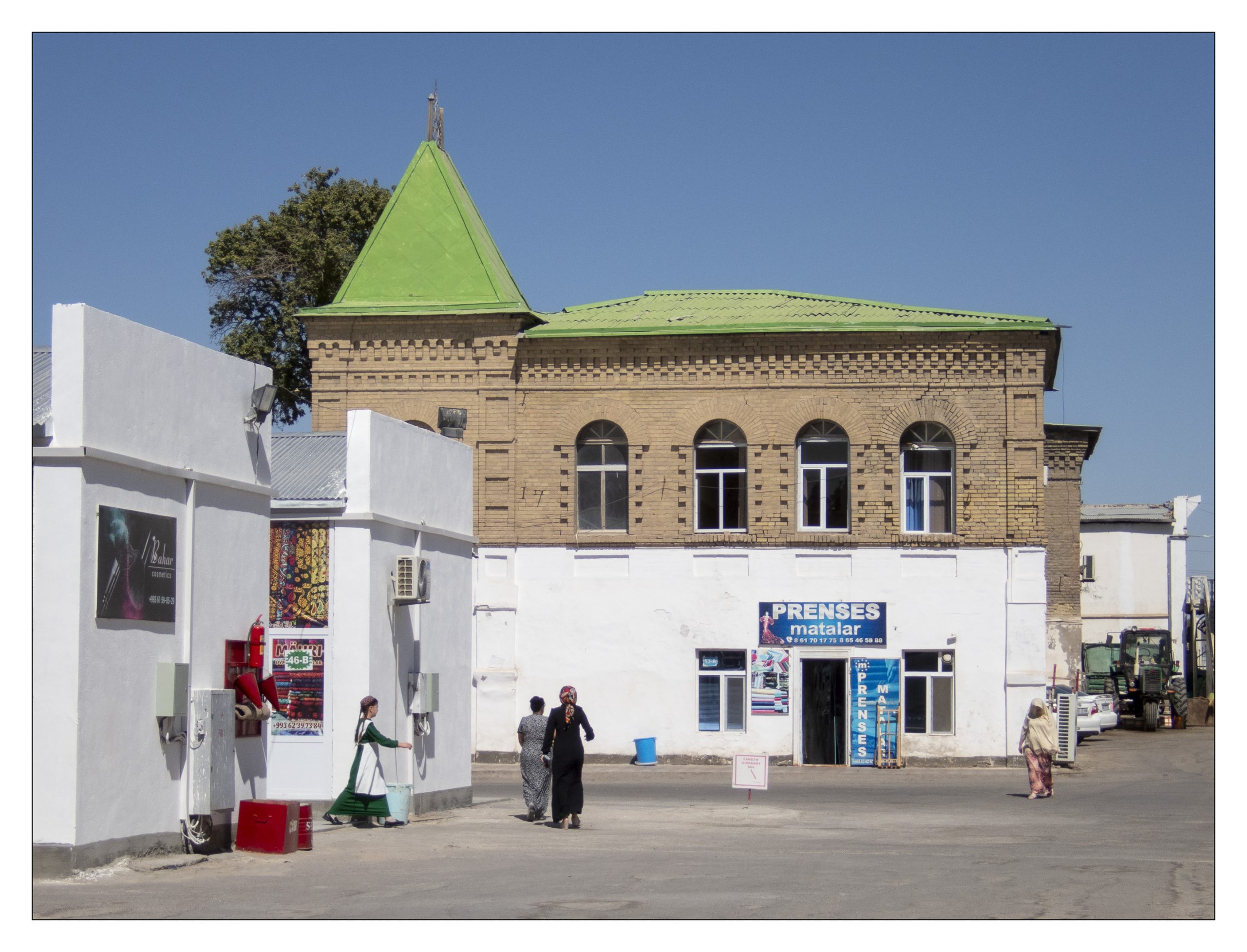
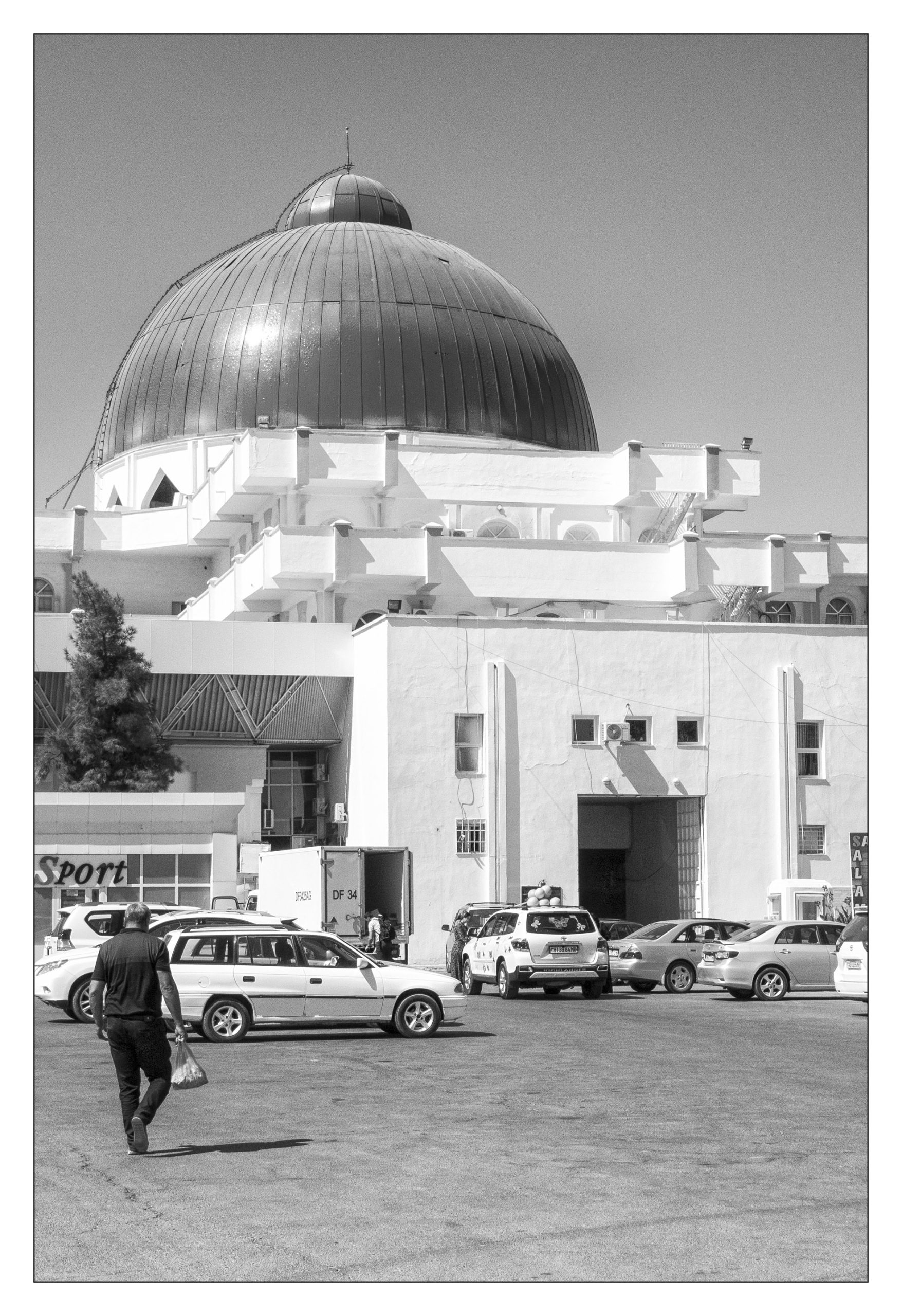
You are welcome to share a link to this page with others.
As always, all comments are welcome and sought.
Cheers, Sean
My note on privacy can be found under the “About” menu item, and if you would like to subscribe to this blog please enter your email.
.
All rights for all material on any media reserved – © Sean P Drysdale 2017-2025
1. I’m quite sure those are the spine bones of some ancient creature. Perhaps the land version of Jörmungandr.
5. I had never thought about mosques at night, and that they might be lighted up in an attractive way. Such is but one consequence of a sheltered life.
12. Exploring that must be extremely dangerous. It looks like it’s about to fall down any moment. Then again, if it hasn’t fallen down in the last couple hundred years, it’s not likely to any time soon.
16. This is the correct distance to photograph camels from. They can spit an amazing distance.
Thank you once again Keith for the cascade of comments. I don’t read Arabic, and therefore I may have missed the writings of how the village fortifications protected people from lumbering spiny creatures that had a thirst and hunger for camels.